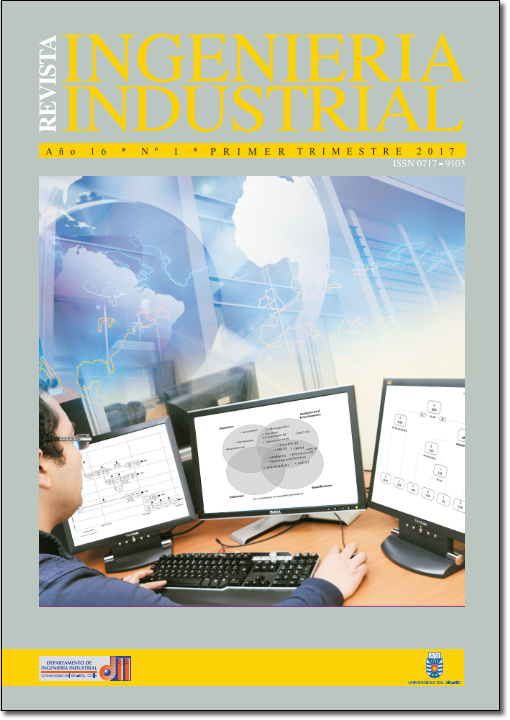REQUIREMENTS PROCESSING TOOLS AND THE BUILDING DESIGNERS MOTIVATION ON USE
DOI:
https://doi.org/10.22320/s07179103/2017.02Palabras clave:
requirements processing, briefing, building design, motivationResumen
The successful development of projects requires, among other conditions, the ability to process requirements. In the construction literature, researchers have figured out that human difficulties was often at the root of Requirements Processing (RP) problems throughout the design phases, and that the employment of tools could be a key factor for RP implementation.
To check these outcomes and to look at how current practitioners behave in relation to the RP tools, an exploratory case study was conducted with a building design team from a public university. The aim of this paper was to investigate the perception of benefits and the motivation of designers regarding the RP tools. The results indicated that 42% of the participants are highly motivated to use new tools and that they have more interest in tools that deal directly with design activities than in those focused on data. Validation tools aroused interest as the most useful tools for designers. 66,7% of the participants mentioned that the tools can make the design process clearer, and that training and adaptation are crucial to promote acceptance and commitment to RP. The main contribution is the indication of gaps for further research and for tools improvement from the designers’ perspective.
Descargas
Citas
ARAYICI, Y., AHMED, V. and AOUAD, G. A requirements engineering framework for integrated systems development for the construction industry. Journal of Information Technology in Construction (ITCon), 2006,11,35-55.
BARRETT, P. S., HUDSON, J. and STANLEY, C. Good practice in briefing: the limits of rationality. Automation in construction, 1999, 8(6), 633-642.
BENDIXEN, M. and KOCH, C. Negotiating visualizations in briefing and design. Building Research & Information, 2007, 35(1), 42-53.
BIOLCHINI, J., MIAN, P. G., NATALI, A. C. C. and TRAVASSOS, G. H. Systematic review in software engineering. System Engineering and Computer Science Department COPPE/ UFRJ, Technical Report ES, 2005, 679(5), 45. APA
BLUYSSEN, P. M., OOSTRA, M. A. R. and BÖHMS, H. M. A top-down system engineering approach as an alternative to the traditional over-the-bench methodology for the design of a building. Intelligent buildings international, 2010, 2(2), 98-115.
CHINYIO, E. A., OLOMOLAIYE, P. O. and CORBETT, P. An evaluation of the project needs of UK building clients. International Journal of Project Management, 1998, 16(6), 385-391.
CHUNG, J. K. H., KUMARASWAMY, M. M. and PALANEESWARAN, E. Improving megaproject briefing through enhanced collaboration with ICT. Automation in construction, 2009, 18(7), 966-974.
ELF, M., SVEDBO ENGSTRÖM, M. and WIJK, H. An assessment of briefs used for designing healthcare environments: a survey in Sweden. Construction Management and Economics, 2012, 30(10), 835-844.
LEE HANSEN, K. and VANEGAS, J. Improving design quality through briefing automation. Building Research & Information, 2003, 31(5), 379-386.
JENSEN, P. A. Inclusive briefing and user involvement: case study of a media centre in
Denmark. Architectural engineering and design management, 2011, 7(1), 38-49.
KAMARA, J. M. and ANUMBA, C. J. ClientPro: a prototype software for client requirements processing in construction. Advances in Engineering Software, 2001, 32(2), 141-158.
KAMARA, J. M., ANUMBA, C. J. and EVBUOMWAN, N. F. O. Client requirements processing in construction: a new approach using QFD. Journal of architectural engineering, 1999, 5(1), 8-15.
KAMARA, J. M., ANUMBA, C. J. and EVBUOMWAN, N. F. O. Computer-based application for the processing of clients' requirements. Journal of computing in civil engineering, 2000, 14(4), 264-271.
KAMARA, J. M., ANUMBA, C. J. and EVBUOMWAN, N. F. O. Assessing the suitability of current briefing practices in construction within a concurrent engineering framework. International journal of project management, 2001, 19(6), 337-351.
LEUNG, M., NG, S. T. and CHEUNG, S. Improving satisfaction through conflict stimulation and resolution in value management in construction projects. Journal of Management in Engineering, 2002, 18(2), 68-75.
LUCK, R., HAENLEIN, H. and BRIGHT, K. Project briefing for accessible design. Design Studies, 2001, 22(3), 297-315.
LUO, X., SHEN, G. Q., FAN, S. and XUE, X. A group decision support system for implementing value management methodology in construction briefing. International Journal of Project Management, 2011, 29(8),1003-1017.
LUO, X. and SHEN, Q. A computer-aided FPS-oriented approach for construction briefing. Tsinghua Science & Technology, 2008, 13, 292-297.
LUO, X., SHEN, G. Q. and FAN, S. A case-based reasoning system for using functional performance specification in the briefing of building projects. Automation in Construction, 2010, 19(6), 725-733.
OTHMAN, A. A.E., HASSAN, T, M. and PASQUIRE, C. L. Drivers for dynamic brief development in construction. Engineering, Construction and Architectural Management, 2004, 11(4), 248- 258.
PARVIAINEN, P., TIHINEN, M., LORMANMS, M. and VAN SOLINGEN, R. Requirements engineering: dealing with the complexity of Sociotechnical Systems Development. Requirements Engineering for Sociotechnical Systems IGI Global, 2005, 1-20.
REZGUI, Y., BOUCHLAGHEM, D. and AUSTIN, S. A. An IT-based approach to managing the construction brief. International Journal of IT in Architecture, Engineering and Construction, 2003, 1(1), 25–37.
RYD, N. The design brief as carrier of client information during the construction process. Design Studies, 2004, 25(3), 231-249.
SCHEER, S., JUNIOR, R. M., QUEVEDO, J. R., MIKALDO J. R. J. and FONTOURA, P. S. The necessary background for implementing and managing building design processes using
web environments. Journal of Information Technology in Construction (ITcon),2007, 12(15), 221-230.
SHEN, Q. and CHUNG, J. K. H. A group decision support system for value management studies in the construction industry. International Journal of Project Management, 2002, 20(3), 247-252.
SHEN, Q., LI, H., CHUNG, J. and HUI, P. Y. A framework for identification and representation of client requirements in the briefing process. Construction management and economics, 2004, 22(2), 213-221.
SHEN, W., XIAOLING, Z., QIPING, S. and TERRENCE, F. The User Pre-Occupancy Evaluation Method in designer–client communication in early design stage: A case study. Automation in construction, 2013, 32, 112-124.
SOETANTO, R., DAINTY, A. R., GLASS, J., and PRICE, A. D. Towards an explicit design decision process: the case of the structural frame. Construction Management and Economics, 2006, 24(6), 603-614.
SOMMERVILLE, I., 2011. Software engineering. 9ª ed. Boston: Pearson
STERRY, P. and SUTRISNA, M. Briefing and designing performing arts buildings: assessing the role of secondary project stakeholders. Architectural Engineering and Design Management, 2007, 3(4), 209-221.
TANG, L. and SHEN, Q. Factors affecting effectiveness and efficiency of analyzing stakeholders' needs at the briefing stage of public private partnership projects. International Journal of Project Management, 2013, 31(4), 513-521.
TANG, L., SHEN, Q., SKITMORE, M. and CHENG, E. W. L.. Ranked critical factors in PPP briefings. Journal of management in engineering, 2012, 29(2), 164-171.
WANDAHL, S. Visual value clarification. A method for an effective brief. Journal of Civil Engineering and Management, 2004, 10(4), 317-326.
YU, A. T. W., SHEN, Q., KELLY, J. and HUNTER, K. An empirical study of the variables affecting construction project briefing/architectural programming. International Journal of Project Management, 2007, 25(2), pp.198-212.
YU, A. T. W. and SHEN, G. Q. P. Critical success factors of the briefing process for construction projects. Journal of Management in Engineering, 2013, 31(3), 04014045.
YU, A. T. W., SHEN, Q., KELLY, J. and HUNTER, K. Investigation of critical success factors in construction project briefing by way of content analysis. Journal of Construction Engineering and management, 2006, 132(11), 178-1186.
YU, A.T., SHEN, Q., KELLY, J. and HUNTER, K. Comparative study of the variables in construction project briefing/architectural programming. Journal of Construction Engineering and Management, 2008, 134(2), 122-138.
Descargas
Publicado
Número
Sección
Licencia

Esta obra está bajo una licencia internacional Creative Commons Atribución 4.0.
Revista Ingeniería Industrial by Revista Ingeniería Industrial is licensed under a Creative Commons Reconocimiento 4.0 Internacional License. Creado a partir de la obra en revistas.ubiobio.cl/index.php/RI/. Puede hallar permisos más allá de los concedidos con esta licencia en http://revistas.ubiobio.cl/index.php/RI/about/

















